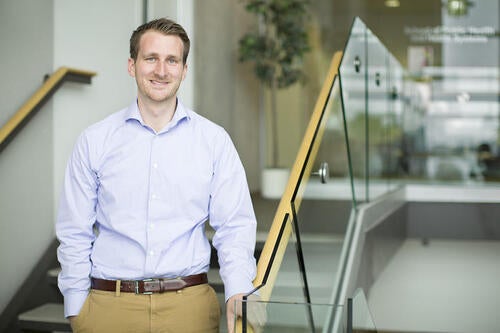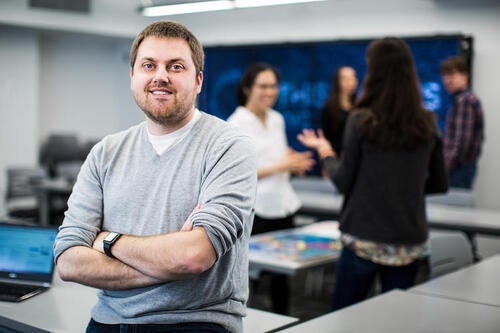
Bridging local efforts for global supports
How Waterloo professors are helping adapt health-response guidelines for lower-resource areas

How Waterloo professors are helping adapt health-response guidelines for lower-resource areas
By Natalie Quinlan University RelationsCOVID-19 has introduced strains to health systems around the world that modern society has never seen before. The outcomes have resulted in an uphill battle for many communities working to mobilize health-care workers and managing dwindling supplies of resources.
In response, the World Health Organization (WHO) has developed guidelines to help countries maintain essential health services during the pandemic. But what happens when a country can’t meet these recommendations?
Warren Dodd and Jim Wallace, professors with the School of Public Health and Health Systems, are taking these guidelines a step further.

Warren Dodd
“We’re adapting them for low resource health posts or health-care settings,” Dodd says. “The ultimate goal is to come up with a generic set of guidelines that could be used across different low- and middle-income countries.
“I’ve never seen resources for research mobilize this quickly,” Dodd says. “We had about a week-and-a-half to write and submit the proposal, and then the results were announced a week later. Usually, it takes about six to eight months to hear back.”
Initial collaborations are beginning with the Philippines, a country with a population three times larger than Canada, but about 33 times smaller in landmass. With such a large number of inhabitants and high levels of income inequality, the situation there is especially dire.
“As we’re seeing at home, health-care workers need our full support, and that’s especially true globally, where they may not have the resources and infrastructure that we do in Canada,” says Wallace.

Jim Wallace
Dodd has worked with a large non-governmental organization in the Philippines since 2017, so it was a natural fit when pivoting priorities toward pandemic aid.
“Our previous working relationship with community partners and physicians in the Philippines allows us to hit the ground running and also do a lot of this work remotely, which is increasingly the way we’re going to have to work,” Dodd says.
With travel restrictions still in place and a 12-hour time difference between the two countries, the internet and phone calls are the only point of connection to their colleagues 11,000 kilometres away. While the task can be trying as internet and cell phone reception is better in some areas than others, the cause is always clear.
“It’s really about bringing the knowledge and expertise that we all have together and contributing to this project,” Dodd says. “For example, Jim Wallace is thinking of creative ways to disseminate the guidelines to diverse audiences. He has thought a lot about app development as a way of promoting healthy behaviours and how to share up-to-date information with a health-care workforce.”
Dodd, Wallace and the team are hoping to have guidelines in place in the next month or two, at which point evaluations will begin with health officials in the Philippines and adjusted accordingly. The pair say they’re relying on the expertise and networking of their team members abroad to create new partnerships and provide insights on how to adjust plans when needed. After wrapping up efforts there, the team plans to adapt the guidelines for Sri Lanka.
“Despite some of the unpredictability and the evolving situation, we are still able to work really well together,” Dodd says. “I have been so impressed by the energy and enthusiasm of my colleagues at U of T and in the Philippines, and I’ve really valued the opportunity to work with them on this.”

Read more
Engineering students are looking for help from academics and industry to refine and produce their low-cost, portable ventilator

Read more
From research to 3D-printed masks and equipment donations, the University community is mobilizing to combat the coronavirus here at home and globally

Read more
Engineering professor Bill Anderson is consulting with hospitals and collaborating with a company hurriedly building new equipment to disinfect N95 respirators using UV light
The University of Waterloo acknowledges that much of our work takes place on the traditional territory of the Neutral, Anishinaabeg, and Haudenosaunee peoples. Our main campus is situated on the Haldimand Tract, the land granted to the Six Nations that includes six miles on each side of the Grand River. Our active work toward reconciliation takes place across our campuses through research, learning, teaching, and community building, and is co-ordinated within the Office of Indigenous Relations.